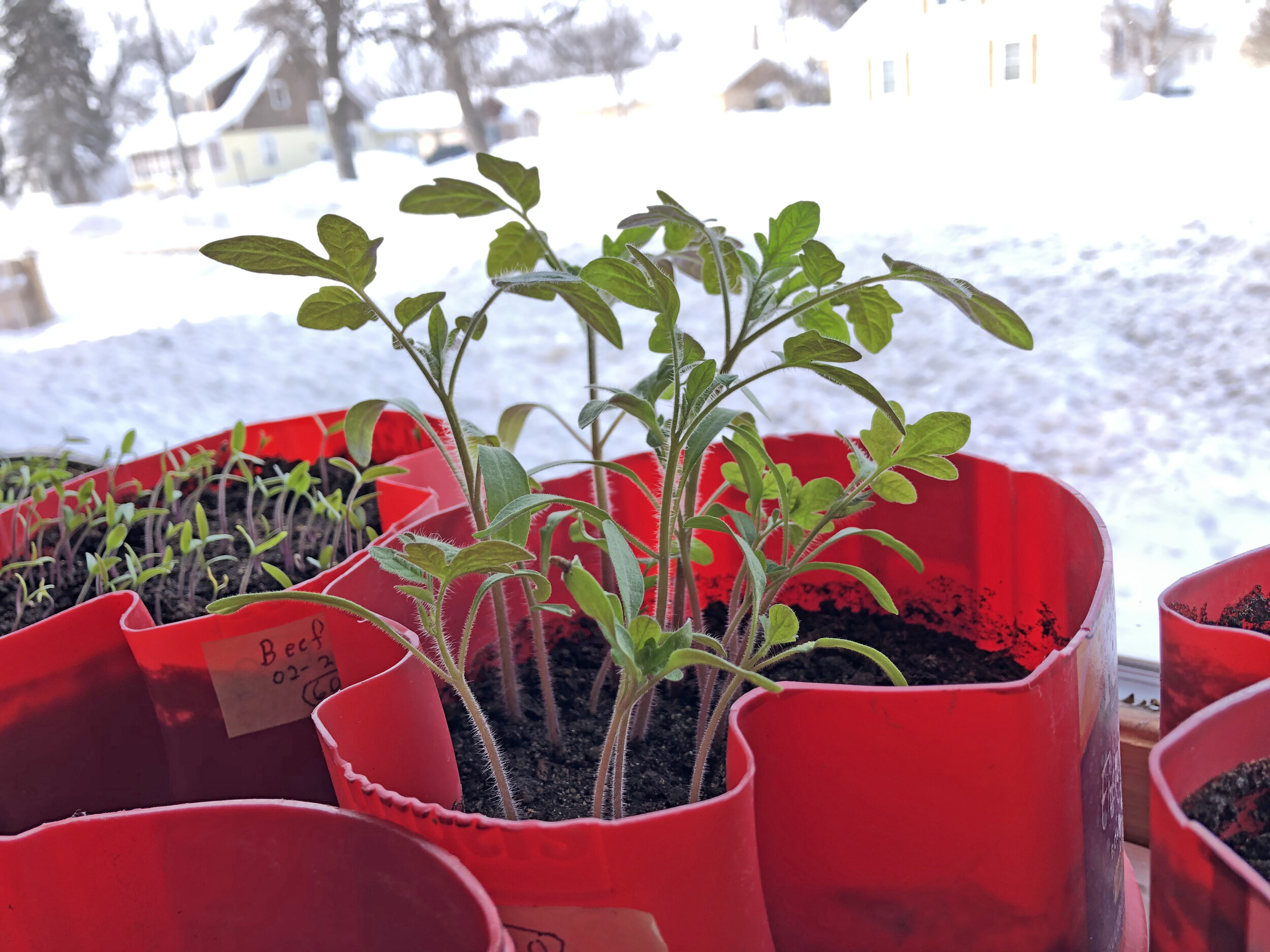Reusing and Repurposing Everyday Items for your Spring Garden
Photo courtesy of Hometown Plants. Flower pots made from old food cans.
As Spring approaches, many of us begin to plan and start seeds for our Spring gardens. To many, though, being able to afford gardening containers even to get started is a huge hurdle. Some may also notice the immense amount of waste in buying new seed trays year after year.
Whether you’re a novice gardener or an experienced grower, we have some seed starting container ideas for you that can help cut down on cost and waste. The CleanUp News team consulted Hometown Plants owner in Southwest Minnesota to get some insight into their unique growing methods.
The act of growing is left up to the plants, per usual, but when planting time begins in February each year, Hometown Plants looks a bit different than a standard, commercialized garden center. That’s because they have mastered the use of post-consumer items to give other people’s trash a second life.
Both plastic and paper mushroom containers make for great seed starting containers!
Their reuse and repurpose approach to planting garden starters helps to inspire others and demonstrate that growing your food is accessible. A big hurdle for many people who want to learn how to grow their food is often a combination of space, time, or money. And unfortunately, in the garden and plant industry, the use of plastic is widespread with minimal recycling options.
There has been a rise in reusable seed-starting trays or compostable planting options. Still, many hobby growers and home gardeners struggle to find ways to cut waste out of their garden practices. Collecting and repurposing can take some extra time upfront, but if you find an item that can be used year after year, you’ll be saving time later down the line.
After all, gardening is a growing and learning process filled with experimentation, adaptation, and a little bit of creativity.
To take the focus away from more extensive growing operations and bring things back to the home gardener, we wanted to offer a few resources and ideas for items you or neighbors may have that you can reuse and repurpose for planting this Spring. Investing in reusable seed-starting trays or buying dozens of compostable seeding pots may not be in your budget, which is why finding items you already have access to can be a great place to start.
Low-waste tip: always start with what you have and go from there.
Lists are examples of containers and other items used by Hometown Plants.
If you are new to reusing containers for growing plants of any kind, please note that all containers need to be sterilized and cleaned to prevent bacteria growth. Don’t become discouraged if your plants get sick. There is often a reason why and once you discover the cause, you can address the problem. Prevention tends to be the best approach when it comes to plants, though, not reaction.
One of the easiest and most accessible ways to sanitize planting containers you reuse is to wash them with dish soap and water. Rinse them thoroughly to remove soap. Then, give them a rinse with hydrogen peroxide. Rinse again, and if you want extra sanitation, put them in the sun to dry.
Hydrogen peroxide will not harm the plants, unlike other solutions, so this is recommended, especially for beginners.
Cleaning and sanitizing containers should be done before every new planting.
Don’t forget to put a few holes in the bottom of containers either. This allows excess water to drain and prevents any unwanted bacteria growth.
Coffee cans of any kind are a great option for either starting seeds or repurposing for small house plants. Plus, you can use the lid as a “plate” to catch any excess water.
When looking for items to use, don’t be afraid to ask others either! Posting in area-based online groups that you are looking for planting containers or other gardening items that people would typically throw away often has amazing results.
If you are familiar with the three R’s: reduce, reuse, and recycle, you’ll know that we are often taught primarily about the last R, recycling. What we likely weren’t taught is that the R’s were put in order of importance. By finding new life in old items, not only are you reducing your consumption of another product, but you are reusing an item as well.
We will admit that not all of the items, like coffee cans or plastic clamshells, are particularly eye-catching or visually pleasing, but they serve their purpose. But if you want, with a little creativity and innovation, a garden project can also become a craft project. Then, once you’ve planted, you can save the containers for use again later in the growing season.
What items do you reuse and repurpose for your garden?
Plastic clam shells from berries or greens work well to start a variety of plants like herbs.







